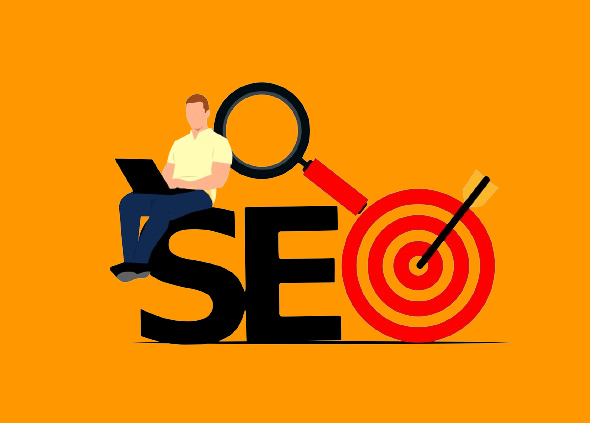Have you ever wondered how SEO and Digital Marketing are related? This article aims to answer this question thoroughly, so I encourage you to read until the end. We will cover everything you need to know about the connection between SEO and Digital Marketing.
What’s SEO?
SEO (Search Engine Optimization) is a set of practices aimed at improving a website’s visibility (popularity) on Search engines like Google, Bing, and Yahoo.
The main objective of SEO is to boost the number of people visiting your website through organic (unpaid) means. This is accomplished by having search engines display your website in their results when users search for information related to your website’s content. The idea is to make your website relevant and useful to the user’s search query so that they are more likely to visit your site.
Let’s look into the components of SEO
1. On-Page SEO: Refers to the practices carried out on a website to optimize it for search engines. This includes;
(I) Keyword Research: This is the process of identifying and choosing target keywords that are relevant to your business and producing content with them.
(II) Content Optimization: Creating the most helpful, relevant, and engaging content. It involves the effective use of target keywords and images to make it reader-friendly.
(III) Meta Tags: Having short, clear, and descriptive title tags, URLs, meta descriptions, images, and alt text.
2. Off-Page SEO: Refers to practices done outside of your website, which includes;
(I) Backlink building: Getting high-quality backlinks from websites with high domain ratings and authority.
(II) Social media signals: Take advantage of social media to increase your brand visibility. It can be through social media marketing or other promotional activities.
(III) Guest blogging: Writing content for other people and using that opportunity to increase your brand visibility.
(IV) Managing Online Reviews and Mentions to maintain a positive brand image.
To learn more, click Off-page SEO
3. Technical SEO: Involve practices carried out on the technical aspects of the website to make it effective and fast. Most importantly, easy to crawl by search engine spiders. It includes
(I)Page Speed: Improving loading times.
(II) Mobile Friendly: Optimal performance of the website on mobile devices.
(III) Site Structure: A clear, properly arranged site structure for easy navigation and better user experience.
To learn more, click Technical SEO
4. Local SEO: Deals with practices done to improve your brand visibility in local search results on Google. Which include
(I) Google Business Profile: Setting up a Google business account for local search listings.
(II) Local Citations: Have consistent business information across all online directories. Make sure changes are updated as soon as possible.
To learn more, click Local SEO
Digital Marketing
Refers to the use of the internet, laptops, and mobile devices to advertise a product, service, or brand, with the aim of reaching more people and achieving specific business goals such as sales, revenue, brand awareness, and consumer analysis.
Digital Marketing encompasses all online efforts aimed at promoting products or services, including SEO. Therefore, SEO is an essential component of digital marketing.
Types of Digital Marketing
1. Content Marketing: Here, you see
(I) Blogging: Creating informative and engaging blog posts.
(II) Video Marketing: Use of short videos (snippets) to convey a message and showcase products or services to your audience.
(III) Infographics: Visual presentation of information to summarize things that may be difficult to understand or for better engagement.
2. Social Media Marketing: Includes
(I) Media Platforms: Identifying and leveraging media platforms that best suit your target audience.
(II) Content Sharing: Sharing valuable content, such as posts, is crucial to building a sense of community and engaging with followers.
(III) Email Marketing and SMS: Here, you target specific groups of people with personalized content. You can use automation tools for timely, consistent, and relevant communication.
3. Paid Advertisement: Here, you see
(I) Social Media Ads: Utilize platforms like Facebook, Instagram, and Twitter for advertising to targeted audiences.
(II) Google Ads: Running paid search campaigns to appear in search engine results.
Having knowledge of SEO and Digital Marketing paves the way for a successful online journey and experience.

